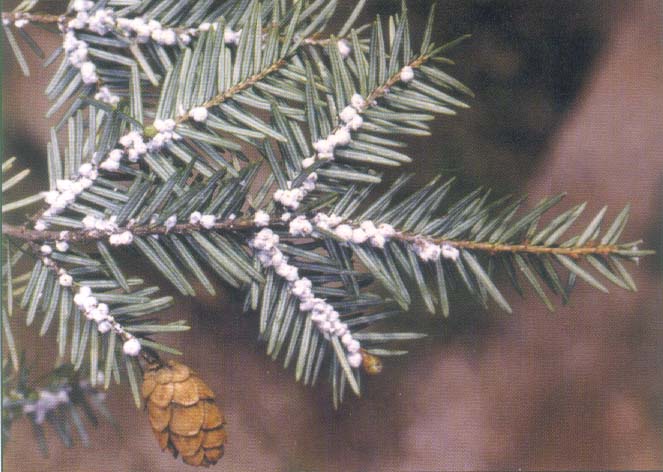 HEMLOCK
WOOLLY ADELGID (HWA). This destructive introduced pest is a major
threat to eastern and Carolina hemlock trees throughout their range.
It presently infests trees in 11 eastern states and is causing significant
mortality of hemlocks in forests and urban communities. Few options
are available for control of this pest. The use of pesticides is
limited because in forested lands, hemlocks often grow along streams, swamps,
or lakes and the threat of aquatic pollution is great. In urban communities
the general public does not favor the use of these materials. Alternative
management options are needed and the potential use of entomopathogenic
fungi is a viable tool for consideration.
HEMLOCK
WOOLLY ADELGID (HWA). This destructive introduced pest is a major
threat to eastern and Carolina hemlock trees throughout their range.
It presently infests trees in 11 eastern states and is causing significant
mortality of hemlocks in forests and urban communities. Few options
are available for control of this pest. The use of pesticides is
limited because in forested lands, hemlocks often grow along streams, swamps,
or lakes and the threat of aquatic pollution is great. In urban communities
the general public does not favor the use of these materials. Alternative
management options are needed and the potential use of entomopathogenic
fungi is a viable tool for consideration.
|
|
|
|
WATCH
FOR THIS PEST!
WHAT
YOU SHOULD KNOW ABOUT THE HEMLOCK WOOLLY ADELGID
Home